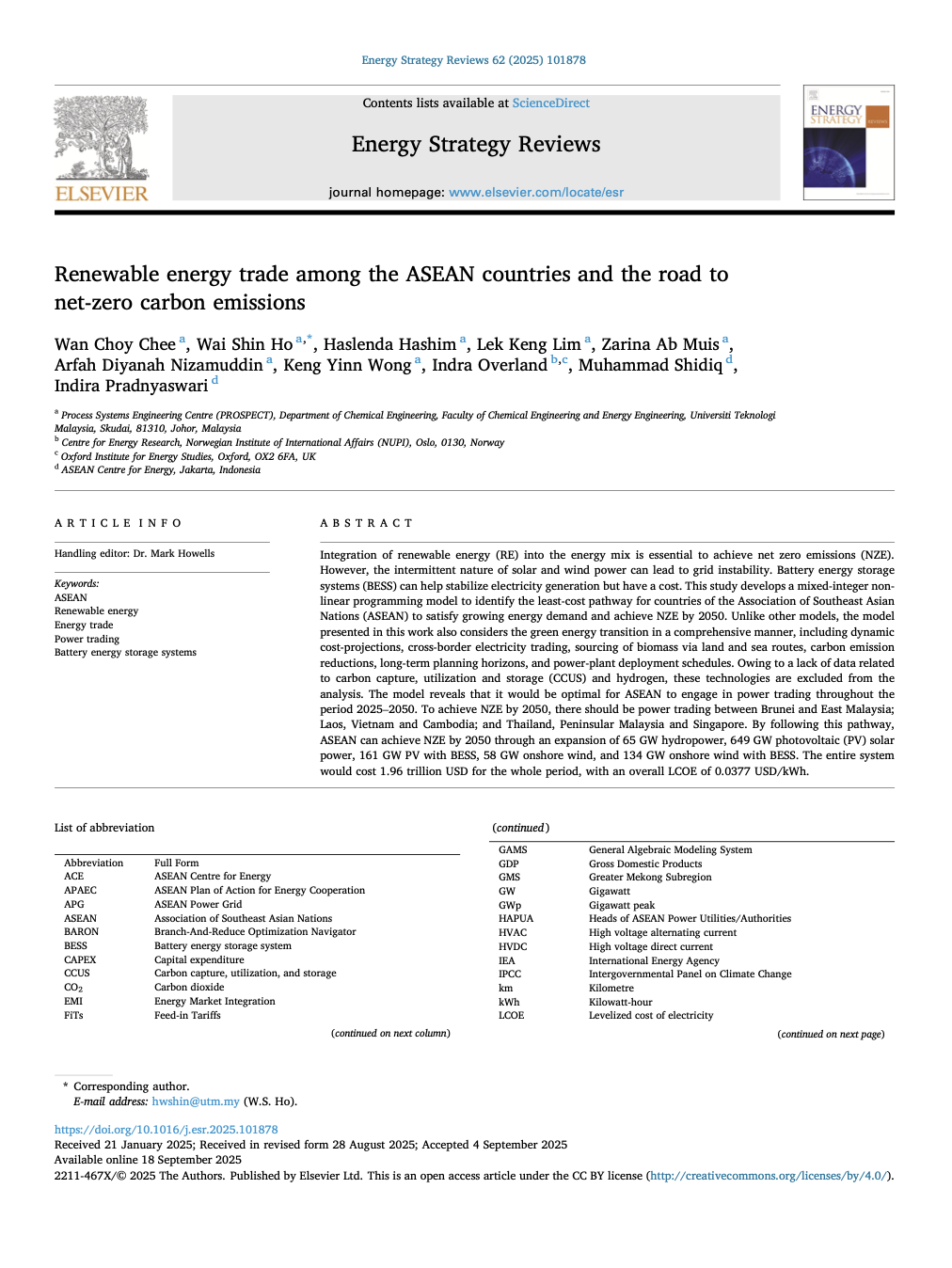
Keyword(s)
Author(s)
Wan Choy Chee, Wai Shin Ho, Haslenda Hashim, Lek Keng Lim, Zarina Ab Muis, Arfah Diyanah Nizamuddin, Keng Yinn Wong, Indra Overland, Muhammad Shidiq, Indira Pradnyaswari
Country(ies)
Publisher
Published Date
Access
DOI
a. Process Systems Engineering Centre (PROSPECT), Department of Chemical Engineering, Faculty of Chemical Engineering and Energy Engineering, Universiti Teknologi Malaysia, Skudai, 81310, Johor, Malaysia;
b. Centre for Energy Research, Norwegian Institute of International Affairs (NUPI), Oslo, 0130, Norway;
c. Oxford Institute for Energy Studies, Oxford, OX2 6FA, UK
d. ASEAN Centre for Energy, Jakarta, Indonesia.
Integration of renewable energy (RE) into the energy mix is essential to achieve net zero emissions (NZE). However, the intermittent nature of solar and wind power can lead to grid instability. Battery energy storage systems (BESS) can help stabilize electricity generation but have a cost. This study develops a mixed-integer non-linear programming model to identify the least-cost pathway for countries of the Association of Southeast Asian Nations (ASEAN) to satisfy growing energy demand and achieve NZE by 2050. Unlike other models, the model presented in this work also considers the green energy transition in a comprehensive manner, including dynamic cost-projections, cross-border electricity trading, sourcing of biomass via land and sea routes, carbon emission reductions, long-term planning horizons, and power-plant deployment schedules. Owing to a lack of data related to carbon capture, utilization and storage (CCUS) and hydrogen, these technologies are excluded from the analysis. The model reveals that it would be optimal for ASEAN to engage in power trading throughout the period 2025–2050. To achieve NZE by 2050, there should be power trading between Brunei and East Malaysia; Laos, Vietnam and Cambodia; and Thailand, Peninsular Malaysia and Singapore. By following this pathway, ASEAN can achieve NZE by 2050 through an expansion of 65 GW hydropower, 649 GW photovoltaic (PV) solar power, 161 GW PV with BESS, 58 GW onshore wind, and 134 GW onshore wind with BESS. The entire system would cost 1.96 trillion USD for the whole period, with an overall LCOE of 0.0377 USD/kWh.